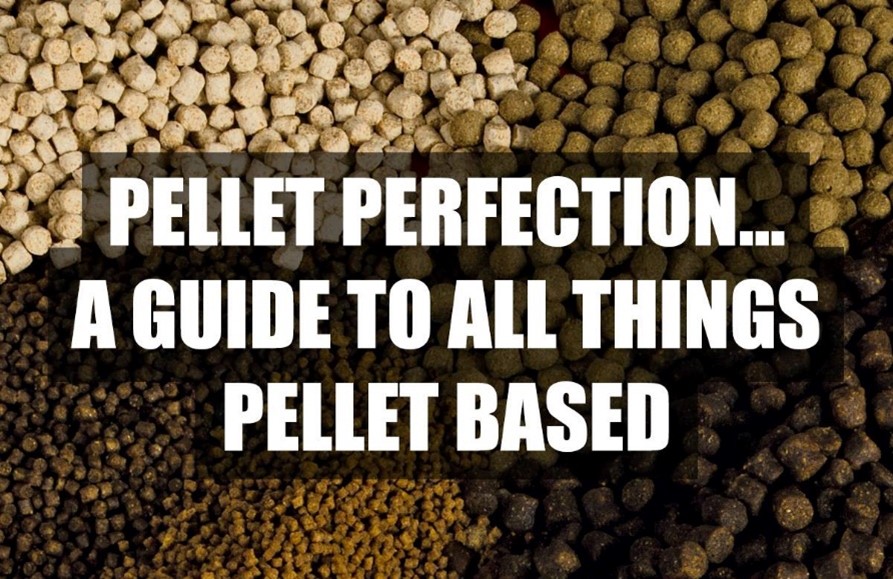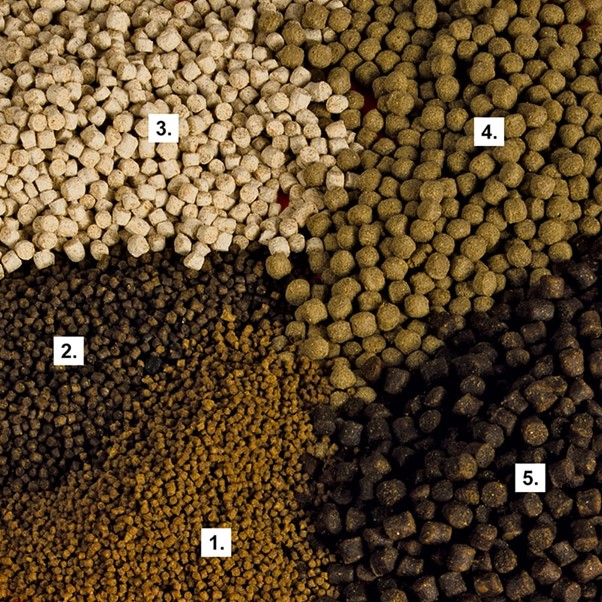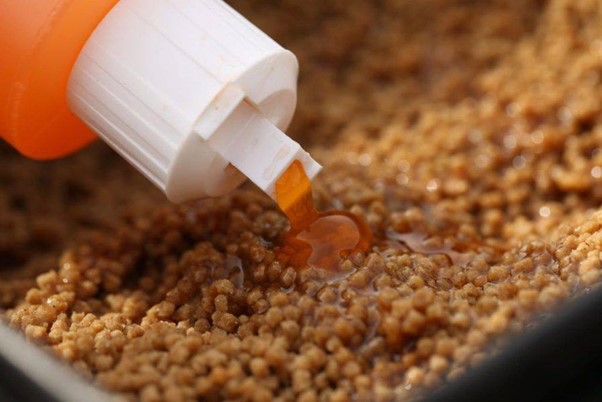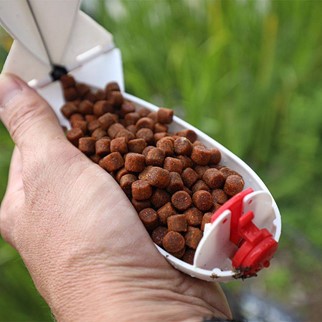The Ultimate Guide to Fishing Pellet Perfection

If you’re serious about catching a lot of fish from commercial waters then you really do have to fish with pellets. We’re not saying that they’re the only bait you can catch on but these commercial fish are born to eat pellets and if you can master their use you’ll be set up for a lifetime of commercial success.
What are fishing pellets?
Pellets are popular in both carp and coarse fishing bait – particularly if you’re targeting commercial venues. Pellets are available in a wider range of sizes than boilies but can be much smaller, as little as 1mm in diameter. Pellets are also much softer than boilies, with a quicker breakdown, pellets will dissolve into a mush when soaked in water, making them ideal for feeder fishing.
What are the Advantages of Using Pellets as Fishing Bait?
One main advantage of the pellet is its versatility. Pellets can be catapulted into the water, softened and pressed into a feeder, banded to your hook… each tactic you use will give you a completely different result depending on the venue and type of fish you’re targeting.
Additionally, you’ll catch everything that swims in a commercial fishery on pellets, from carp and F1s to skimmers and roach. This is the main reason why there is so much choice. There are dozens of sizes, shapes, colours, floating and sinking varieties, hook baits and feed baits, so it is difficult to know where to start.
To make it easier, we’ve stripped back the bright packaging and technical jargon to bring you a basic, fundamental breakdown of the pellet in this guide, so the next time you visit the tackle shop you’ll have a clear idea of what you need to buy for your tactics.
The Size of the Fishing Pellet Matters

1.) 1mm pellet: The smallest-diameter pellet you can buy, the 1mm is great for winter angling when bites are hard to come by and you don’t want to overfeed the fish. They can be scalded with boiling water and used with a Method feeder. F1s, in particular, enjoy this size of feed.
2.) 2mm pellet: The size of choice for many Method-feeder anglers and good when the water is cold but the fish are feeding confidently. Scald with boiling water so that they stick around your Method mould but don’t use too much water or they won’t fall off the feeder.
3.) 4mm pellet: A great size to use on the hook, when soaked or pumped, for all manner of species but also a popular size to use as loose feed – the all-rounder, allowing you to catch everything that swims in your commercial lake.
4.) 6mm pellet: Again a great size for bagging on carp commercials, it can be used as a feed but works well on the hook when feeding 4mm pellets. You will catch bream and silverfish as well as carp on this size but it’ll help you select the bigger fish.
5.) 8mm pellet: The hook bait of choice for many commercial carp baggers, when pumped the 8mm lends itself to fishing down the edge for those big lumps. You can also fish 8mm pellets by banding or hair rigging them. A great size to pick out those bigger fish.
Batches of pellets tend to come in 500g, 1kg, or 5kg packages, although you will find some larger or smaller. You can get bags of all the same size of mixed but this is always specified in our descriptions or on the packaging.
Different Types of Fishing Pellets
There are a huge variety of fishing pellets on the market, not all created equal. Some pellets offer a higher oil content, some break down faster and some are great for adding to a hair rig. Which type of pellet you pick will be based on what tactic you wish to perform, so let’s take a closer look at pellet types.

Halibut Pellets: High in oil, nutrients and proteins, these pellets are great for creating beds of free bait in your swim or threaded on a hair. They will attract specimens such as carp, barbel, bream and chub.
Trout Pellets: These are usually made from salmon fry crumb, and offer a have very high concentration of oil and protein that trout love. This bait is great for warmer weather, especially used in the summer as the oil disperses better in the hotter water temperatures.
Carp Pellets: If your commercial has banned halibut and trout pellets due to their high oil content, try carp pellets. Carp pellets tend to use vegetable proteins, are less oily, break down rapidly and are best used as a loose feed, rather than a hookbait.
Hemp Pellets: As hemp is so popular amongst freshwater fish, these pellets are made to breakdown into a hempy mush. It's low in oil content so it is ideal for all year round use, working best in PVA bags, groundbait mixes or as a loose feed. Hemp pellets can be further boosted with a little hemp oil, making them ideal for tench and carp fishing.
CSL Pellets: Short for Corn Steep Liquor, CSL pellets are savoury smelling baits that collapse quickly underwater. Ideal for using in a particle fix, in PVA bags or method mixes, CSL pellets help to make a layer of attractive bait that mostly carp and barbel enjoy.
Drilled Pellets: You can always drill your own pellets but this can be both effort and time consuming so many companies produce pre-drilled varieties in a number of sizes. Drilled pellets are a great choice when you’re looking at leaving your bait out there for a while because they won’t fall off and will slowly release their flavour. Ideal for pellet-waggler fishing when you are constantly casting and you don’t want your pellet falling off the hook.
Banded pellets: A hard pellet that you attach to your hook with latex pellet bands so that you can then fish with a bait that’s exactly the same as your feed bait. Because of the pellets’ hardness, you can avoid the attentions of small fish. Experiment with sizes to see what’s best on the day but we suggest feeding 4mm pellets and fishing 6mm on the band as a starting point.
Expanders Pellets: These pellets come as a hard and buoyant bait, ideal for adding directly to hookbait. For a spongy texture, soak the expander pellets in water. They will still float but the weight of your hook will make them sink and this gives you a great neutral buoyancy. You can also pump these expander pellets for feed.
Soft feed pellets: These are smaller, moister versions of carp pellets, ideal for keeping carp and silver fish interested in your swim. You can buy soft pellets ready to use, in a variety of sizes, colours and flavours. Use them straight on the hook or hair rig them. Perfect for pole, waggler or feeder fishing. We think 4mm is a great size for all-round commercial use.
Considering Flavours for you Pellets
Like boilies, these pellets come in a huge range of flavours in order to appeal to different fish in different conditions. Many fishing bait companies make customised fishmeal or carp pellets laced with flavouring, all suited for different fishing methods, climates and conditions.

If you are looking to add your own flavouring to pellets or pellet mixes, through liquids, sprays and powders, consider the following.
- Water-Based Flavouring: Drapes low to the bottom of the water, tempting fish like carp, barbel and bream.
- Oil-based Flavouring: Rises through the water and attract mid-water fish, like roach.
For immediate attraction, adding flavours on the outer edges of pellets means it will disperse once underwater, drawing fish towards the flavoured bait. With pellets, more flavour is released are the pellet collapses.
For longer attraction, you want the flavour inside the bait, leaking out a slower rate, attracting more fish over a longer amount of time. Use flavoured to enhance or boost pellets. For soaking hard pellets, make sure to add flavouring, shake to cover all the bait then leave for about 15 minutes.
TOP TIP - Try to avoid adding highly concentrated boilie flavours onto pellets as they tend to be too over-powering for fish.
What Colour Pellet is Best?
Fishing Pellets come in a range of colours and most pellets respond well when taking on dyes in order to modify their appearance. As a rule of thumb, darker shades of pellets such as browns are best for pre-baiting and fishing over throughout the year.
When adding colouring to fishing pellets, you must consider what colours are best visible in murky waters. In recent years, carp, in particular, have drawn attracted to bright hookbaits so maybe try reds, pinks, etc. Experiment with your colouring as see what works for you.

You can purchase Pellet Colourant Additives that not only dye but flavour your pellets. These tend to come in colours such as brown, yellows, oranges, red and green! When dying a batch of pellets, remember that the liquid can change the baits texture.
Ideal Fishing Tools for Preparing Pellet Baits
There are also loads of bait making tools on the market that can modify your pellets for your intended use of the bait.
- Pellet pumps: Used to transform floating pellets into sinkers
- Bait Sprayer: Can be used for Groundbait, Leam, and Pellets, it is ideal for dampening pellets to prevent them from drying out in the summer.
- Bait Choppers: Ideal for quicker bait preparation, bait or pellet choppers can help create smaller bait chunks for a mix.
- Pellet Band Stretcher: This gadget makes putting the band over your pellets a whole lot easier.
- Bait Drill: If you want to drill your own pellets, this needle type tool will easily penetrate the hardest of pellets without splitting them.
- Hair Needle: A must-have tool for creating hair rigs, often used with pellets.
How to get pellets out to your swim…
There are a few ways you can get those pellets in the water, depending on your target distance and bait intentions, you may want to consider the following application methods.

Catapult: Can achieve a reasonable distance with some practice.
By Hand: Throwing out pellets by hand is a fast way of delivering a lot of bait, however, it is only really ideal for short distance or margin fishing.
Spomb and spod: This tactic is ideal for accurate delivery of large pellet bait quantities, this tactic also makes a large disturbance with your spomb hits the water but for some fish this is more of a food signal than alarm bell.
Throwing stick: Are good for getting out a small quantity of pellet bait with accuracy and minimal disturbance.
Pellet feeder: Ideal for colder waters, a pellet feeder allows you to present less free offerings in your swim as rather than using hundreds of micro pellets or groundbait particles, you can present a handful of 4mm pellets.
Hook and Line: When hooking soft or expander pellets as a hookbait, use pellets that are robust enough to be paired with waggler or feeder tackle.
PVA Bag: Due to their quick dissolving in water, these bags can pack a large quantity of pellets and are ideal for spreading bigger pellets to surround the hook bait.
Top Tip - Do not overfeed the fish with pellets, you want them to take your bait, not just your free offerings. So, for example, if you’re fishing the pellet waggler, catty or throw out three or four pellets every cast. Little and often is far better than chucking loads of pellets in and having them sat on the bottom, plus with only a few pellets going in each cast the fish will be competing!
More Pellet Fishing Tips?
If you want more tips on the best tactics to use for fishing with pellets, check out some of our how-to guides!
Pellet Waggler Tips for Cold Water, Carp Fishing
Pellet Fishing at Natural Venues
How to Get a Winning Edge with Fishing Pellets
You can also check out our full range of Fishing Pellets, in your local AD or Online.
We hope you have found this guide on how to achieve pellet perfection useful for your bait choices. You can also check out bait reviews and top 10 selling baits on our blog to help you pick the perfect pellet for the job!
